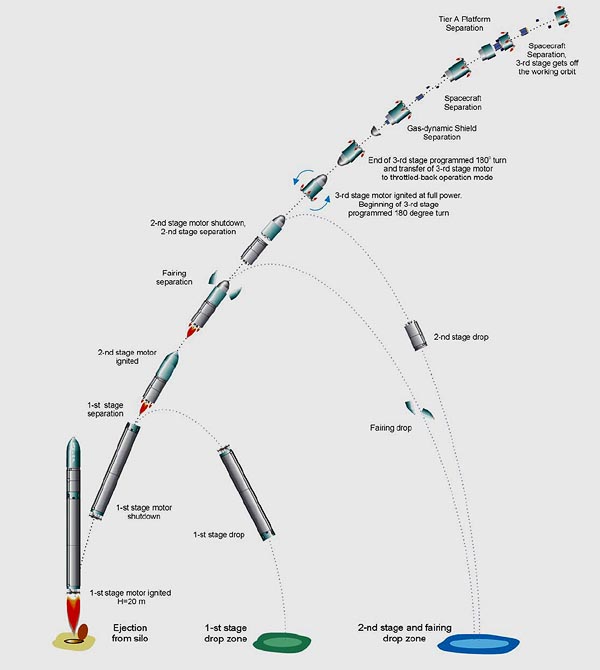Dnepr Launch Vehicle
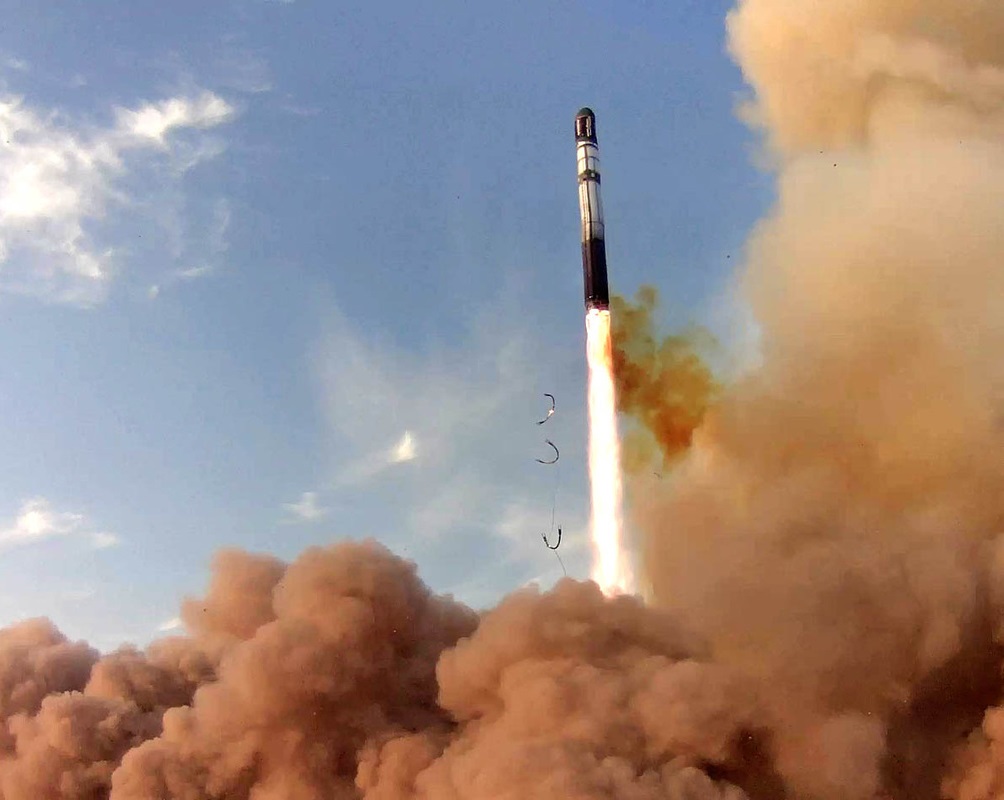
Dnepr is a Russian-Ukrainian Launch System based on the R-36M Intercontinental Ballistic Missile that is now operated by launch provider ISC Kosmotras to deliver satellites and spacecraft to orbit and other trajectories.
The R-36 missile, also known a SS-18 or Satan, was designed by the Yuzhnoye Design Bureau in the 1960s building on the R-16 program. Flight testing took place between 1962 and 1966 and afterwards, R-36 was operational – being available in a light, heavy and orbital version which would have allowed the Soviets to launch a large number of nuclear weapons into orbit where they could not have been intercepted at the time.
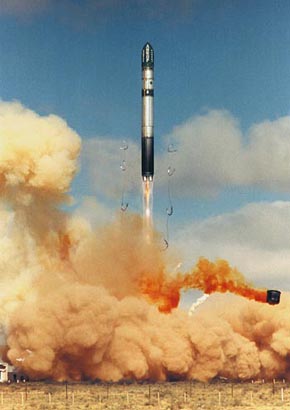
In 1970, a new R-36 version capable of carrying multiple warheads was built and another upgrade led to the design of the R-36M that was a theoretical first-strike capability, giving the Soviet union the ability to destroy the US Minuteman ICBM facilities before retaliation would have been possible. R-36M was deployed in 1975 with a single 20-megaton warhead. R-36M went through a number of modifications that increased range and the number of independent re-entry vehicles that could be carried by the missile. At its peak, 308 R-36 Silos were deployed across the Soviet Union.
After the fall of the Soviet Union, an agreement was reached to eliminate the R-36 ICBM. As an alternative to the destruction of the existing vehicles, an assessment begun to evaluate the rocket as an orbital launch vehicle. 150 R-36 launchers were put in storage as it was determined that the R-36 only needed few modifications to serve as space launch vehicle. These modifications were mainly associated with the installation of payload accommodations and the flight control system that needed upgrades for orbital launches.
The R-36 ICBM launched more than 160 times with a success rate of 97%.
The Dnepr launch vehicle made its maiden flight in 1999 when it carried the UoSat-12, a small satellite, built by Surrey Satellite Technology, UK, to orbit. One year later, the launcher made its first multi-payload mission delivering five satellites to orbit. Multiple satellite launches were to become common with Dnepr as the launcher was planned to deliver one main payload and a number of smaller satellites and CubeSats to orbit. In total, Dnepr has conducted 17 orbital launches to date with 16 successful flights and one failure that occurred in 2006 due to an engine failure on the first stage.
Dnepr Specifications
| Type | Dnepr |
| Height | 34.4m |
| Diameter | 3.0m |
| Launch Mass | 211,000kg |
| Stage 1 | R-36M 1st Stage |
| Stage 2 | R-36M 2nd Stage |
| Stage 3 | R-36M 3rdStage |
| Stage 4 | SpaceTug 1-1 (Optional) |
| Stage 5 | SpaceTug 1-2 (Optional) |
| Mass to LEO | 4,500kg |
| Mass to ISS LEO | 3,000kg |
| Mass to TLI | 550kg (With SpaceTug 1-1) |
The Dnepr Launch Vehicle stands 34.3 meters tall and is 3.0 meters in diameter with a liftoff mass of 211,000 Kilograms.
The launcher has three stages in its basic configuration, but can be outfitted with up to two SpaceTug Upper Stages. All three stages use hypergolic propellants.
The Dnepr launcher is operated from the Baikonur Cosmodrome, Kazakhstan, and Dombarovsky Air Base, Orenburg Region, Russia.
Dnepr can reach a variety of orbits mostly Low Earth Orbits at inclinations of 50.5, 64.5, 87.3 and 98 degrees. Outfitted with SpaceTug Upper Stages, Dnepr can target a variety of orbits and trajectories including Trans Lunar Trajectories.

First Stage
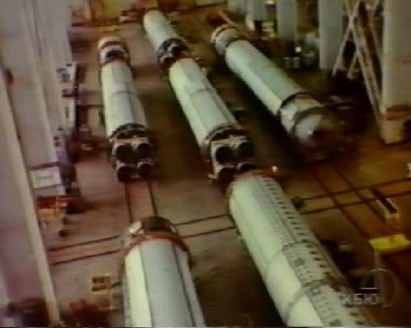
| Type | R-36M 1st Stage |
| Inert Mass | 13,600kg |
| Launch Mass | 161,500kg |
| Diameter | 3.0m |
| Length | 22.3m |
| Fuel | Unsymmetrical Dimethylhydrazine |
| Oxidizer | Nitrogen Tetroxide |
| Propellant Mass | 147,900kg |
| Propulsion | 1 RD-264 (Cluster of 4 RD-263) |
| Thrust (Vacuum) | 4,523kN |
| Impulse (Vac) | 318sec |
| Engine Mass | 3,600kg |
| Engine Length | 2.15m |
| Engine Diameter | 3.03m |
| Chamber Pressure | ~220bar |
| Ox. To Fuel Ratio | 2.7 |
| Thrust to Weight | 128 |
| Burn Time | 130sec |
| Ignition | After Ejection from Silo |
| Attitude Control | Nozzle Gimbaling by 7° |
| Ejection from Silo | On special Tray that is ejected |
| by a black powder mortar system |
The first Stage of the Dnepr Launcher is 22.3 meters long and 3.0 meters in diameter facilitating two large propellant tanks that hold up to 147,900 Kilograms of storable propellants.
Like the other two stages, the first stage uses Unsymmetrical Dimethylhydrazine fuel and Nitrogen Tetroxide Oxidizer. The first stage has a liftoff mass of 161,500 Kilograms.
It is powered by an RD-264 engine which is a cluster of four RD-263 engines sharing common turbopump equipment.
The engine cluster weighs 3,600 Kilograms and is 2.15 meters long and 3.03 meters in diameter. RD-264 provides 4,523 Kilonewtons (461,200kg) of vacuum thrust with a Thrust to weight Ration of 128. The engine operates at a chamber pressure of about 220bar and an oxidizer to Fuel Ratio of 2.7.
First Stage Control is accomplished by individually gimbaling the four nozzles of the engine by up to 7 degrees to achieve three-axis control First stage burn time is 130 seconds.
Silo Launch System
Like most Soviet ICBMs, R-36 and its Dnepr modification are launched from underground Silos. Unlike other launchers such as the UR-100 series (Strela and Rockot), Dnepr uses a cold-gas ejection system instead of propelling itself out of the silo by using its engines.
This system has two major advantages – the first is the initial boost supplied to the entire rocket mass by the ejection system and the second is that less damage to the silo is caused by using this type of system. Launchers that ignite inside the Silo require special protection on the inner walls of the silo and launching them still causes damage to the silo.
A cold-gas ejection system leads to less damage because ignition takes place 20 meters above the silo and allows a more rapid launch rate. It also reduces stress and acoustic loads on the payload.
Prior to launch, the first two stages of Dnepr are integrated inside an assembly facility before being inserted into the Silo by a transporter erector device. Then, the fueled third stage is mated to the stack inside the Silo. Afterwards, the payload unit consisting of the payload stack encapsulated in the fairing, is attached to the launcher. In the days leading up to launch, the first two stages are loaded with propellants inside the Silo before countdown operations get underway.
Dnepr Silo Design & Ejection Sequence
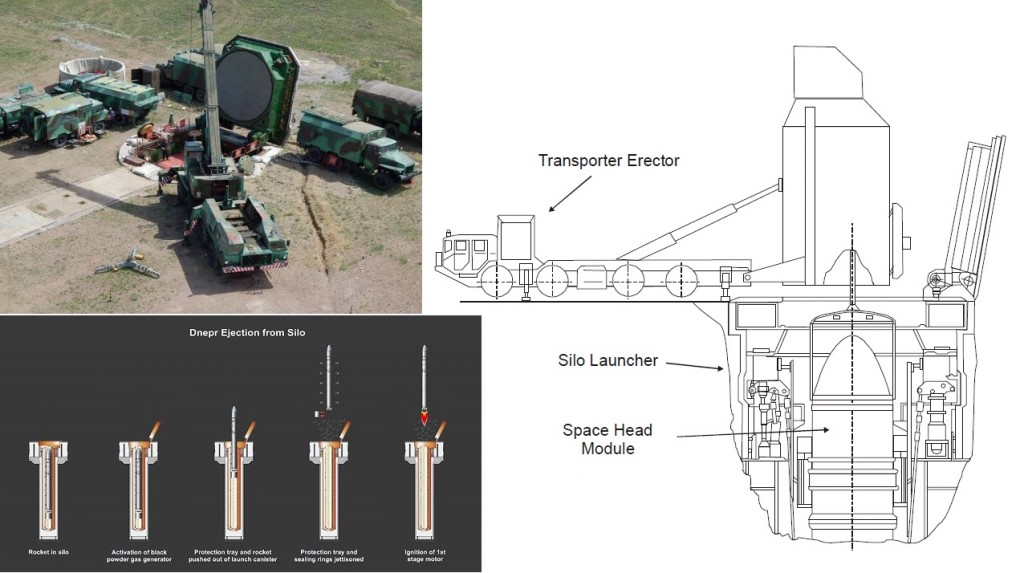
At the base of the rocket, a special tray is installed. A black-powder mortar system is initiated at launch time to rapidly push the tray and rocket upward out of the Silo. Immediately after exiting the Silo, the Tray is ejected to the side by small rocket motors. At the same time, a series of five O-Rings that are located between the stages and interfaces are jettisoned. An instant later, the first stage of Dnepr ignites and the rocket takes off. Also, the oxidizer tanks of the vehicle are vented causing small clouds of dark gas to be released.
Second Stage
| Type | R-36M 2nd Stage |
| Inert Mass | 4,260kg |
| Launch Mass | 41,100kg |
| Diameter | 3.0m |
| Length | 5.7m |
| Fuel | Unsymmetrical Dimethylhydrazine |
| Oxidizer | Nitrogen Tetroxide |
| Propellant Mass | 36,740kg |
| Propulsion | RD-0255 (RD-0256 + RD-0257) |
| Thrust (Vacuum) | 755kN |
| Impulse (Vac) | 340sec |
| Main Engine | 1 Chamber, fixed |
| Vernier Engine | 4 Chambers |
| Burn Time | 190sec |
| Attitude Control | Gimbaling Vernier Jets |
The second stage of the Dnepr launcher is 5.7 meters long and 3.0 meters in diameter. It holds up to 36,740 Kilograms of propellants, also UMDH and NTO. Stage 2 has a total liftoff mass of 41,100 Kilograms.
It features a single RD-0255 engine that consists of an RD-0256 main engine and a four-chamber RD-0257 vernier system based on the RD-0228 engine design.
The main engine is a staged combustion engine using a gas generator to power its turbopump. RD-0255 provides a total thrust of 755 Kilonewtons (77,000kg).
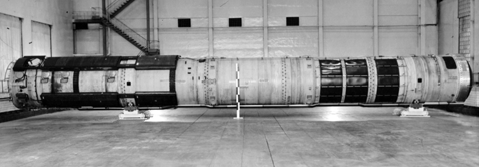
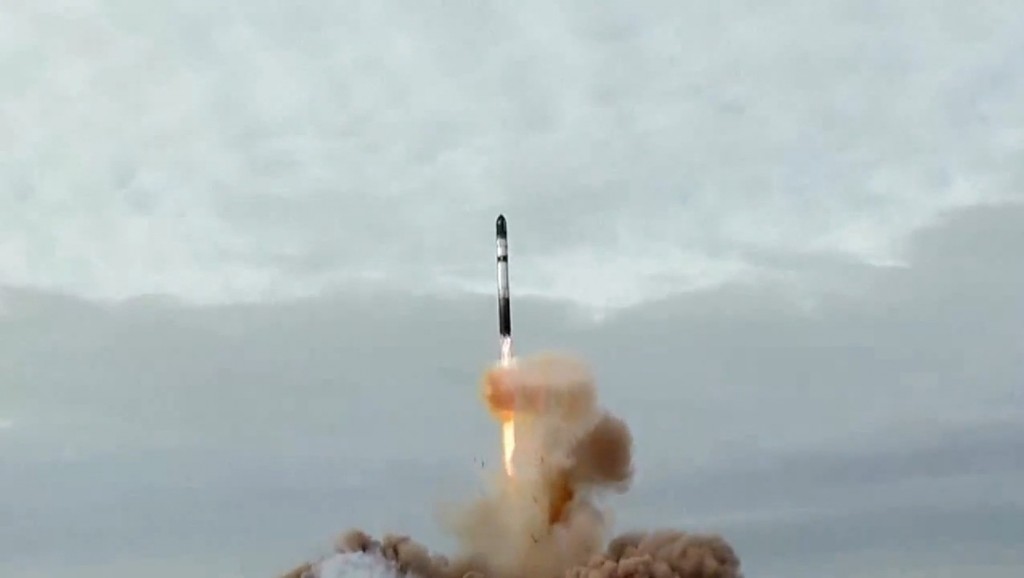
Third Stage
| Type | PBV |
| Inert Mass | 2,360kg |
| Launch Mass | 4,270kg |
| Diameter | 3.0m |
| Length | 1.0m |
| Fuel | Unsymmetrical Dimethylhydrazine |
| Oxidizer | Nitrogen Tetroxide |
| Propellant Mass | 1,910kg |
| Propulsion | 4 x RD-869 |
| RD-869 Thrust (Vac) | 5.052kN (Throttled: 2.07kN) |
| Total Thrust (Vac) | 20.2kN (Throttled: 8.3kN) |
| Nominal Impulse | 320sec (Throttled: 312.5sec) |
| Engine Mass | 196kg |
| Chamber Pressure | 4.1MPa (Throttled: 1.7MPa) |
| Nozzle Exit Pres. | 0.003MPa (Throttled: 0.001MPa) |
| Ox. To Fuel Ratio | 1.92 (Throttled: 2.0) |
| Ox Inlet Pressure | 6.4MPa (Throttled: 2.1MPa) |
| Fuel Inlet Pressure | 7.0MPa (Throttled: 2.2MPa) |
| Burn Time | Up to 1,000 sec |
| Attitude Control | Gimbaling Engines |
| Notes | Engines directed Forward |
The Upper Stag of the basic Dnepr launcher is 1 meter long and also 3 meters in diameter featuring two propellant tanks holding 1,910kg of UMDH and NTO. The Stage has a liftoff mass of 4,270 Kilograms.
It is equipped with four RD-869 engines that are firing forward – towards the nose of the launch vehicle – after being deployed following third stage separation. This requires the third stage to perform a 180-degree backflip after igniting in order to achieve positive thrust. The engines are slightly canted outward so that their plumes do not interfere with launch vehicle and payload hardware.
Flying this type of flight profile is a relic of the original R-36 concept that required the upper stage to perform multiple warhead deployments in a short time frame. Forward thrusting engines result in a simple payload fairing jettison because the vehicle automatically pulls away from the jettisoned fairing. Also, with the engines burning, the launcher can release its payload during the burn to create spacing between the individual payloads and place itself into its disposal orbit once all satellites were released.
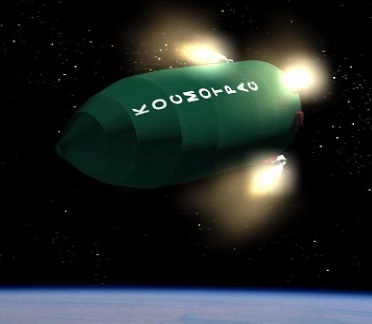
RD-869 has an empty mass of 196 Kilograms and generates a thrust of 5.05 Kilonewtons of thrust in nominal mode and 2.07kN in a throttled back mode. This results in a total thrust of the third stage of 20.2kN (2,060) or 8.3kN (846kg) respectively. Usually, the third stage completes a high-thrust and low-thrust segment burning up to 1,000 seconds. The low-thrust profile is used during spacecraft deployment and flyaway maneuvers.
Control of the stage is provided by gimbaling the four engines.
The third stage also houses the Guidance and Control equipment of the launcher which was built for the Dnepr launcher and was not used on the conventional R-36.
Payload Fairing
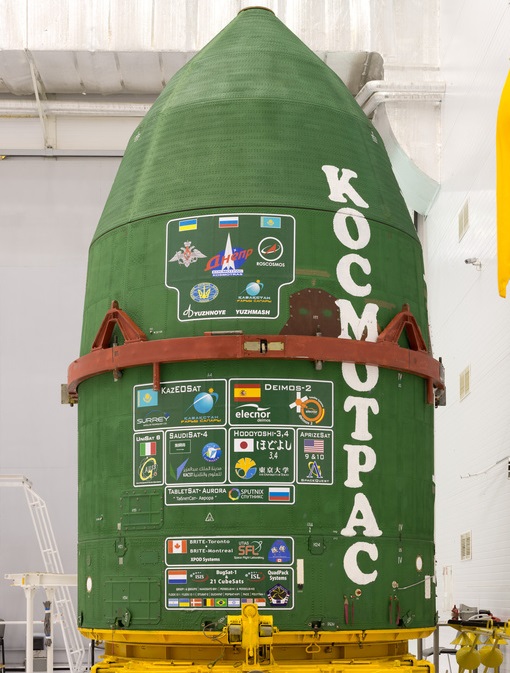
Dnepr offers a number of different fairing or Space Head Module designs to accommodate a number of spacecraft. The fairing is separated during the third stage burn – first, the upper cone is jettisoned before the lower section is separated just before spacecraft release to ensure protection from the RD-869 engine plumes.
The Type 1 SHM is used for medium sized spacecraft. It is 3 meters in diameter and consists of a 3.17-meter long upper cone and a 2.08 cylindrical section below. It is 5.25m long.
Type 2 SHMs are used for multiple-payload missions. It features a 2.24-meter long upper cone and a 0.94-meter lower cone with a platform to mount payloads on. Below, there is a 2.8-meter cylindrical section that facilitates another payload platform.
The large, or Type 3, SHM consists of a 3.17-meter long payload fairing and 4.28-meter cylindrical section. This fairing can facilitate a payload dispenser that allows to launch two larger satellites in a stacked fashion.
The Payload Envelope can also be increased by using smaller payload adapters.
.
Dnepr Space Head Module Variants
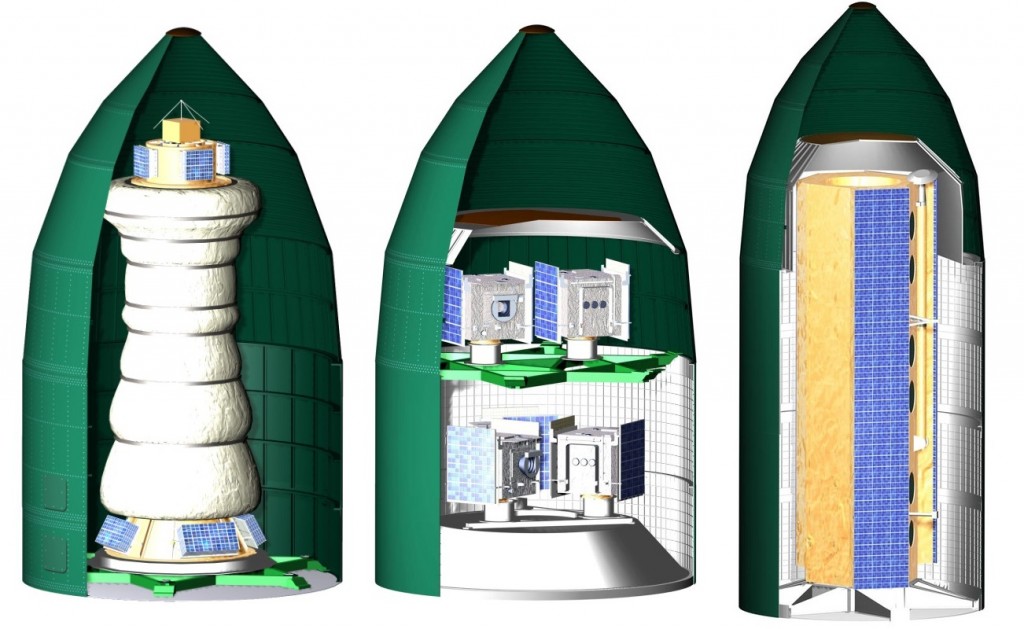
Payload Adapters
Payload Adapters interface with the vehicle and the payload and are the only attachment point of the payload on the Launcher. They house equipment that is needed for Spacecraft Separation and ensure that the satellite or spacecraft is secured during powered flight. A variety of payload adapters will be available to satellite customers in order to fit a large number of spacecraft dimensions and interfaces
Injection Accuracy
| Orbital Parameter | 300km, 98° | 600km, 98° | 900km, 65° |
| Altitude | +/- 4 km | +/- 5.5 km | +/- 10.0 km |
| Period | +/- 3 sec | +/- 4.0 sec | +/- 6.5 sec |
| Inclination | +/- 0.04° | +/- 0.045° | +/- 0.05° |
| RAAN | +/- 0.05° | +/- 0.060° | +/- 0.07° |
.
Launch Preparation Flow
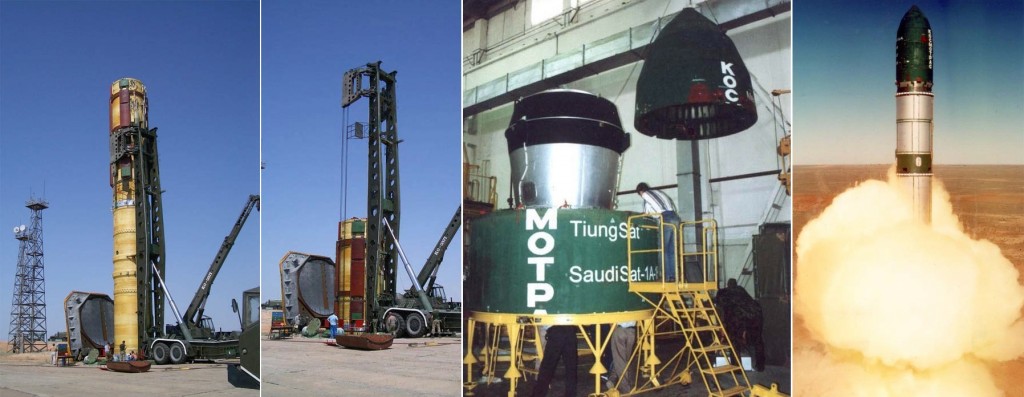
Launch Profile
